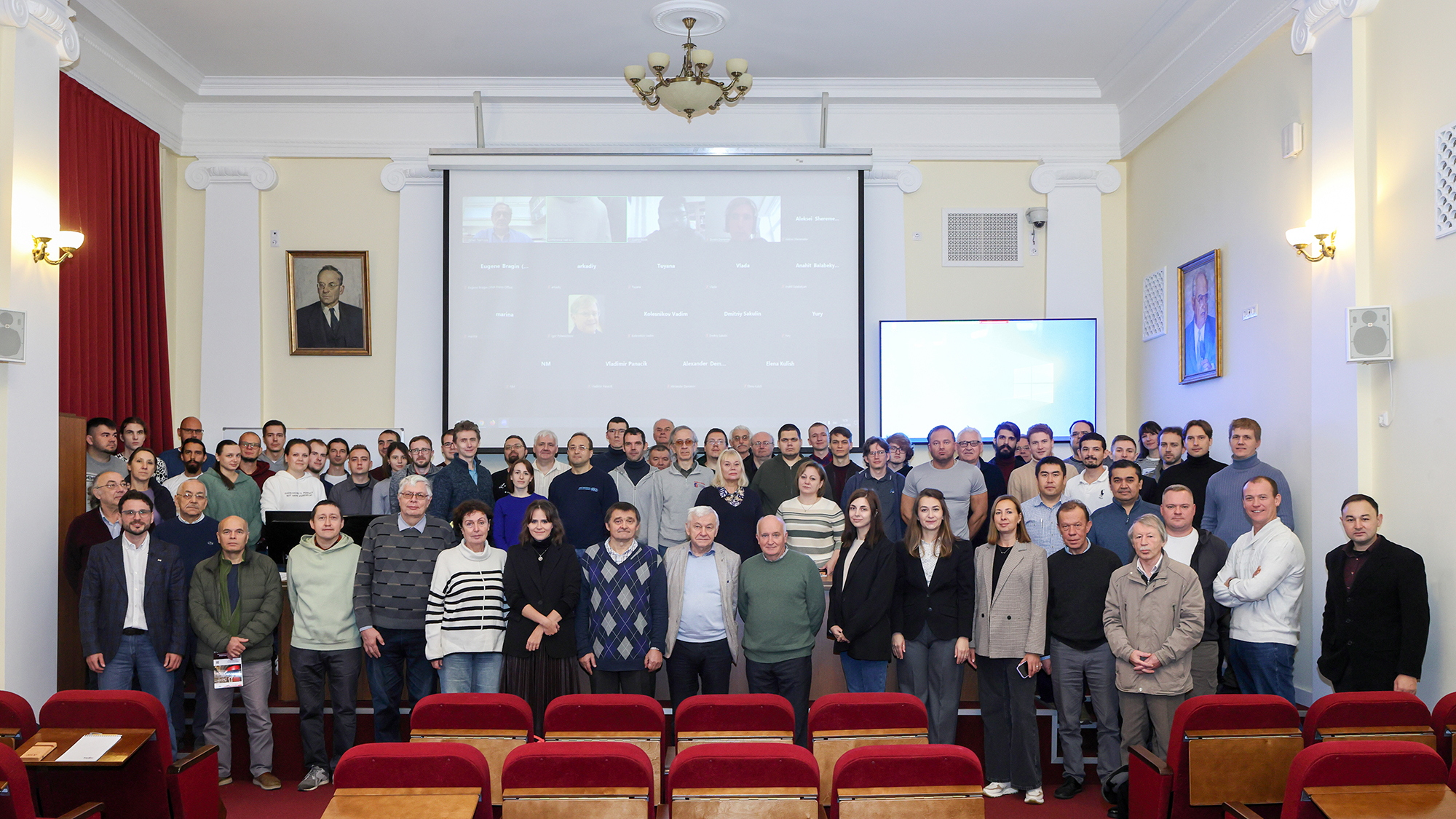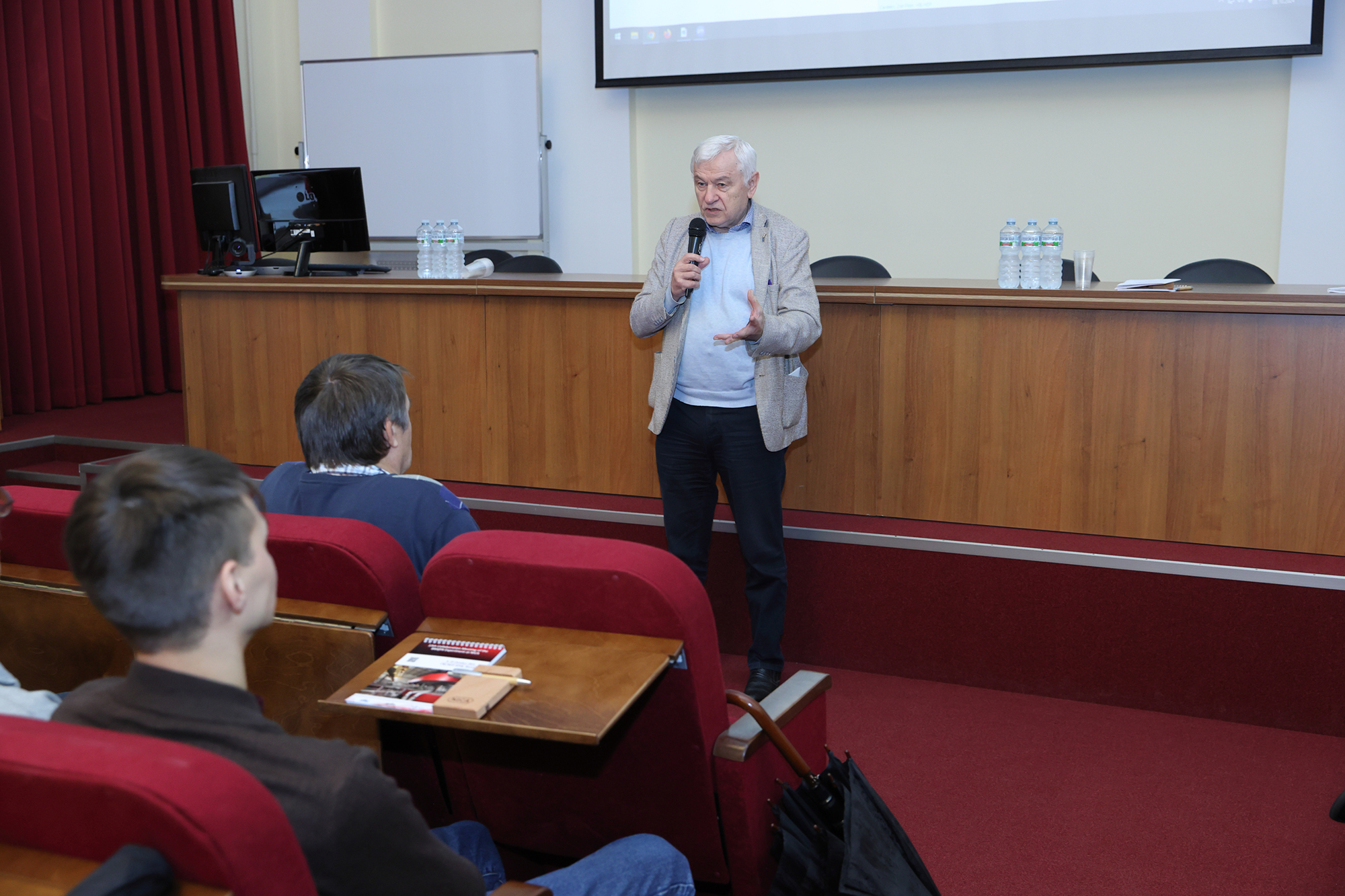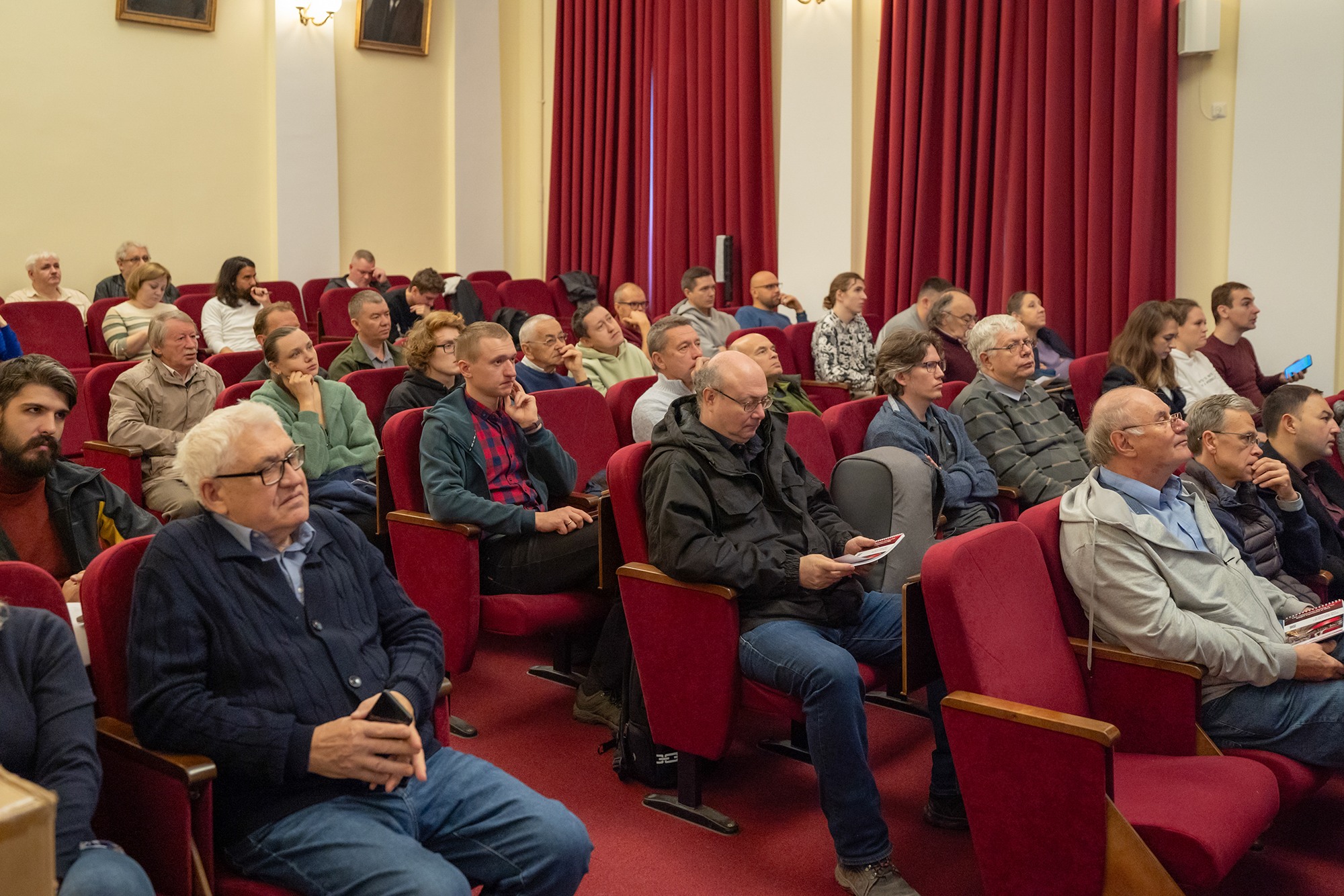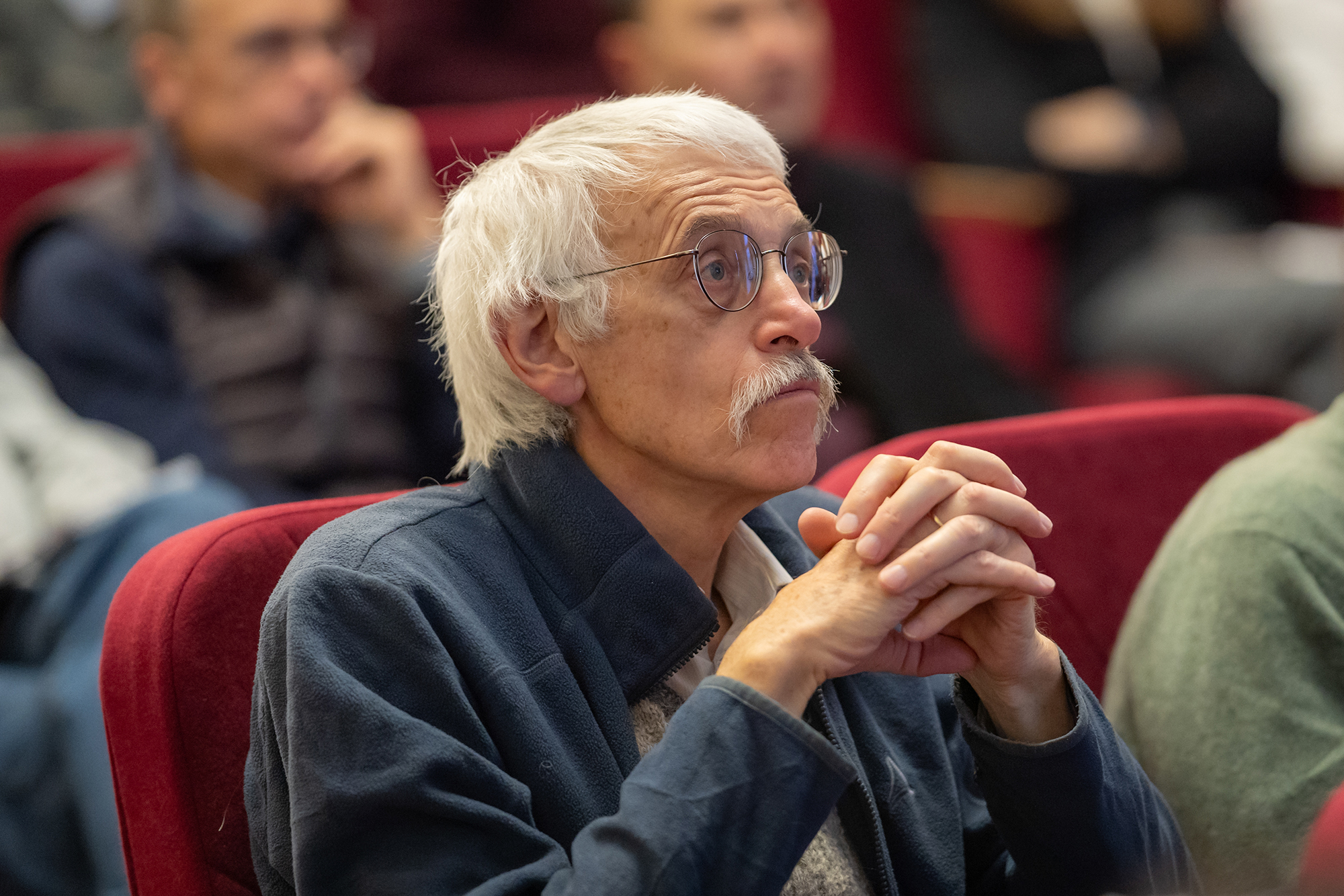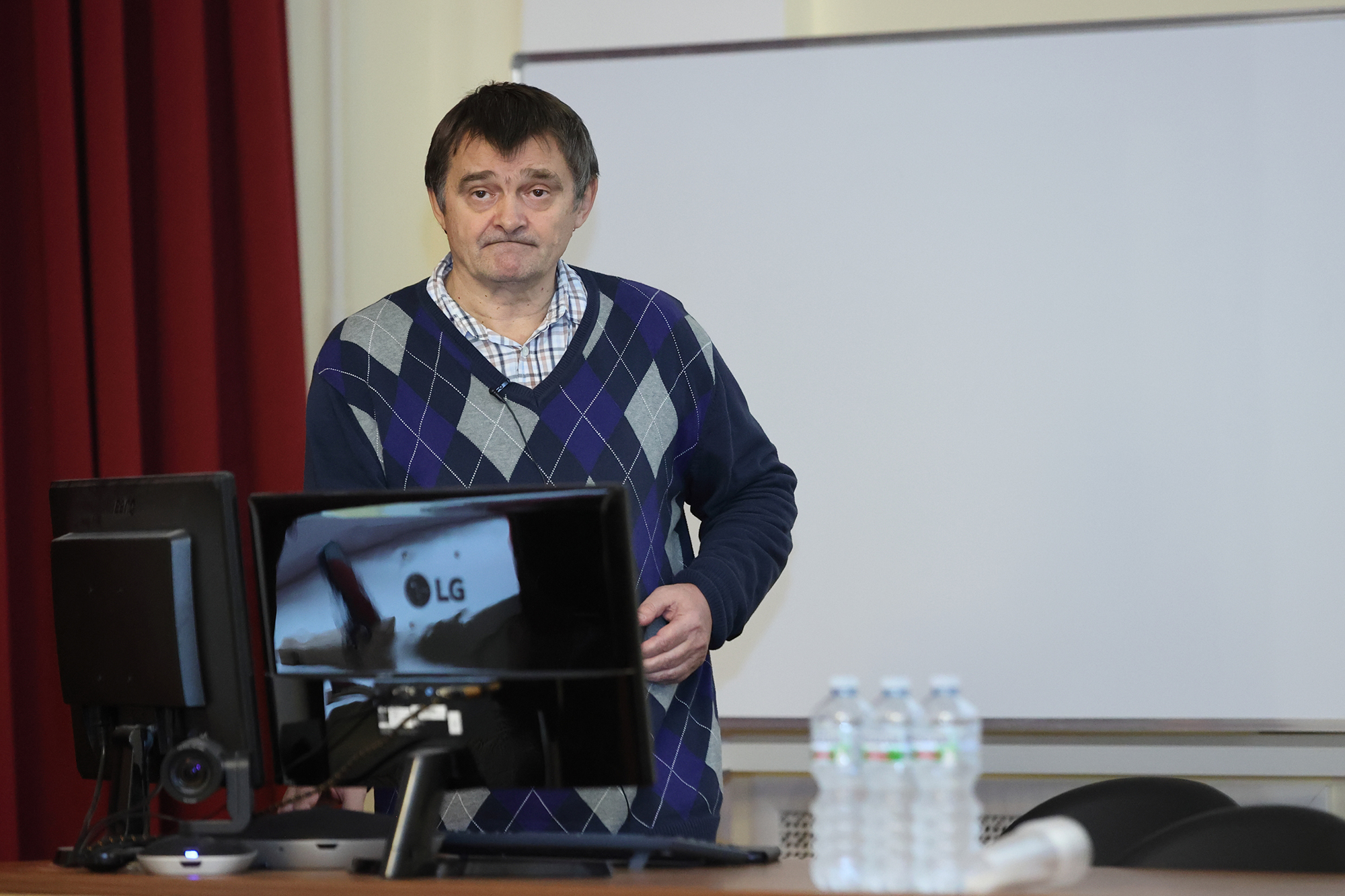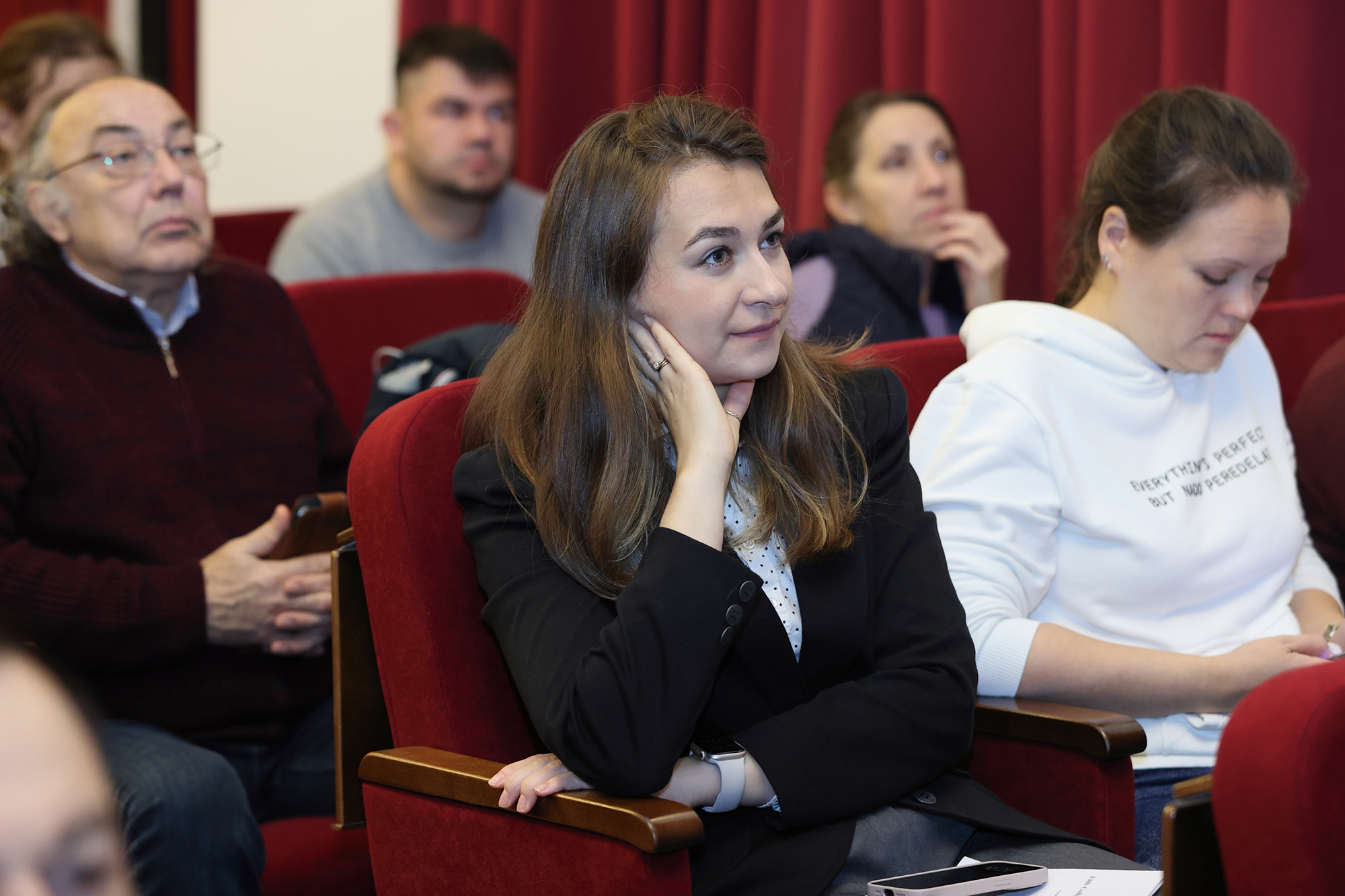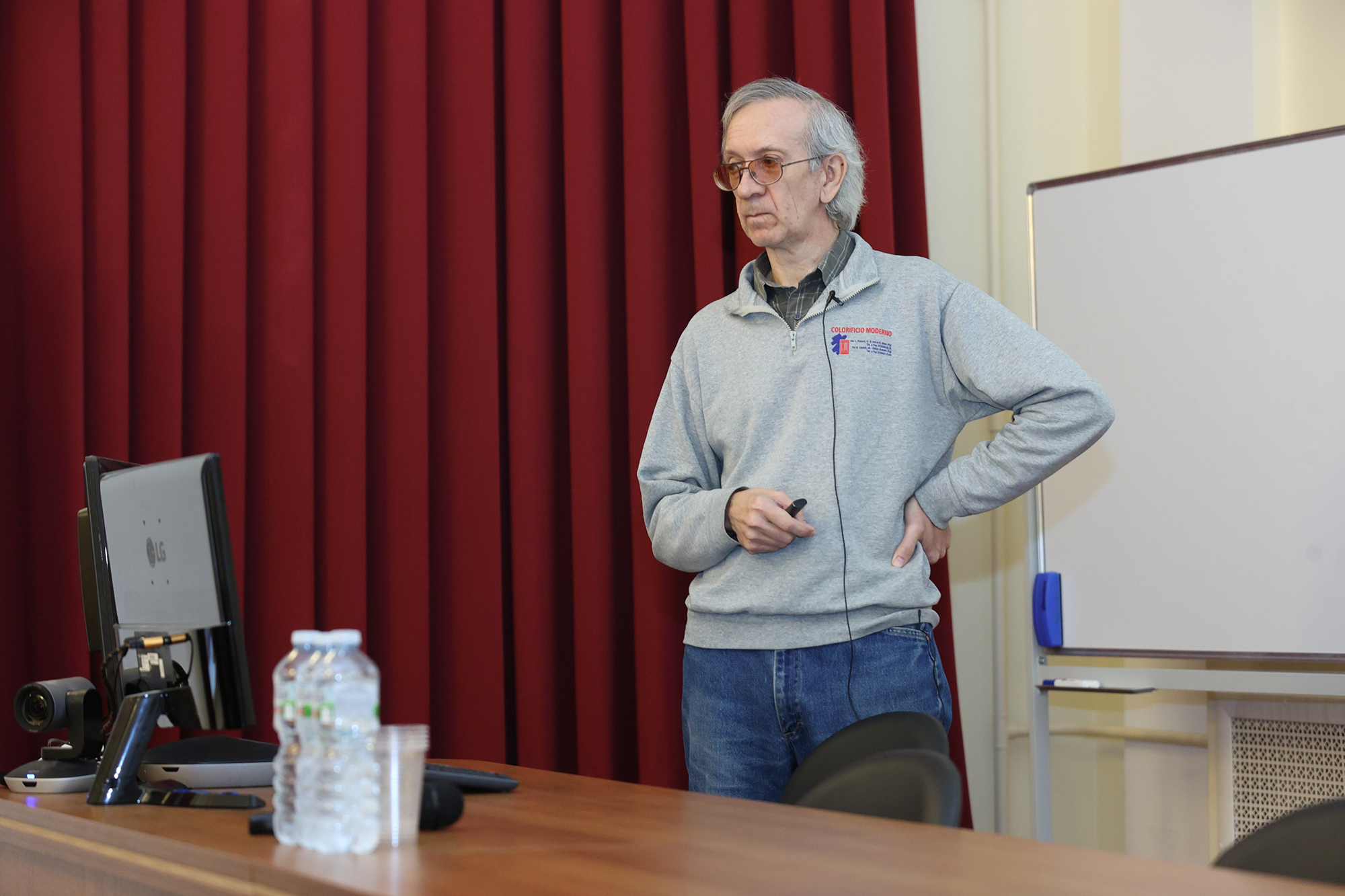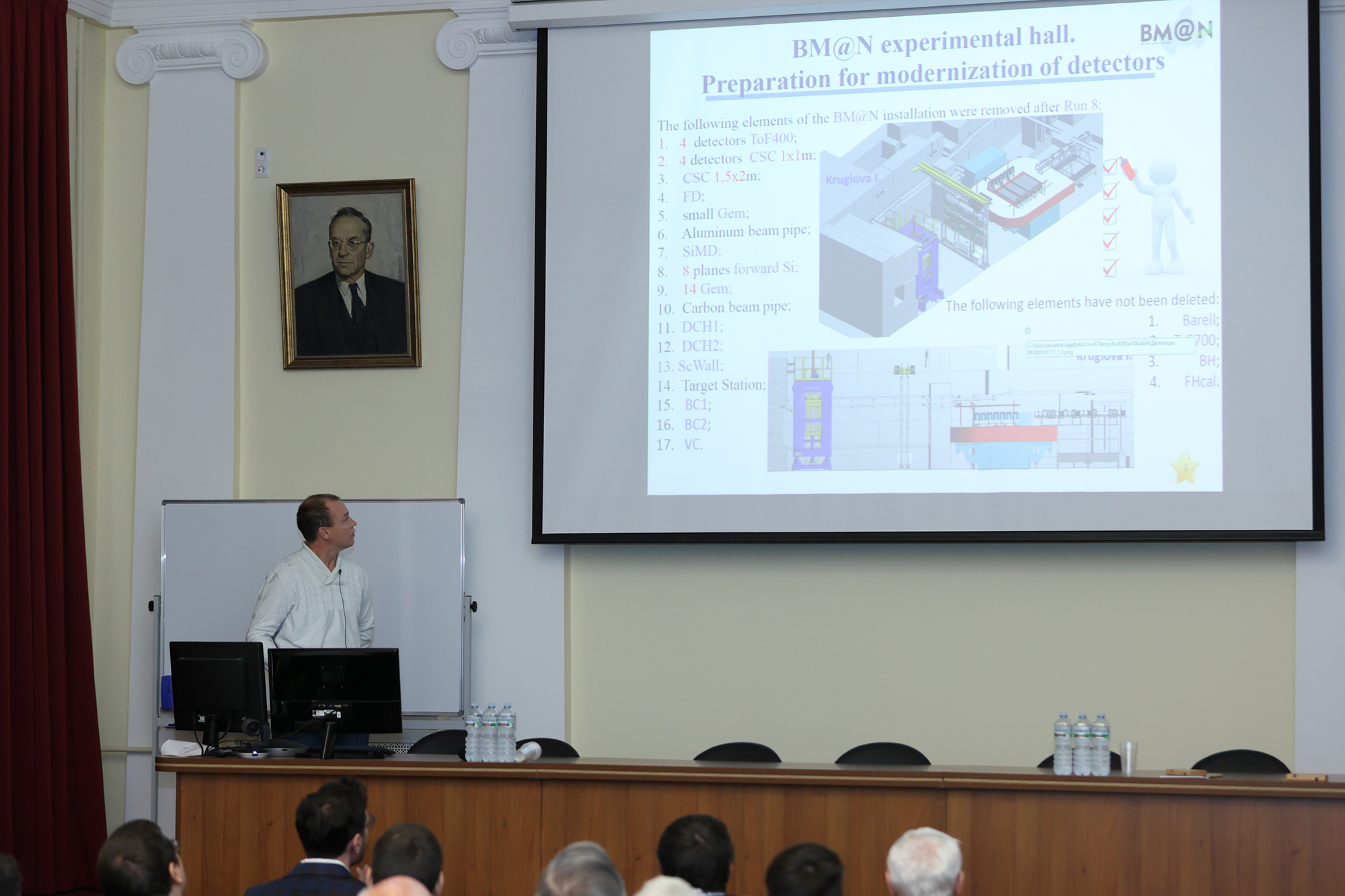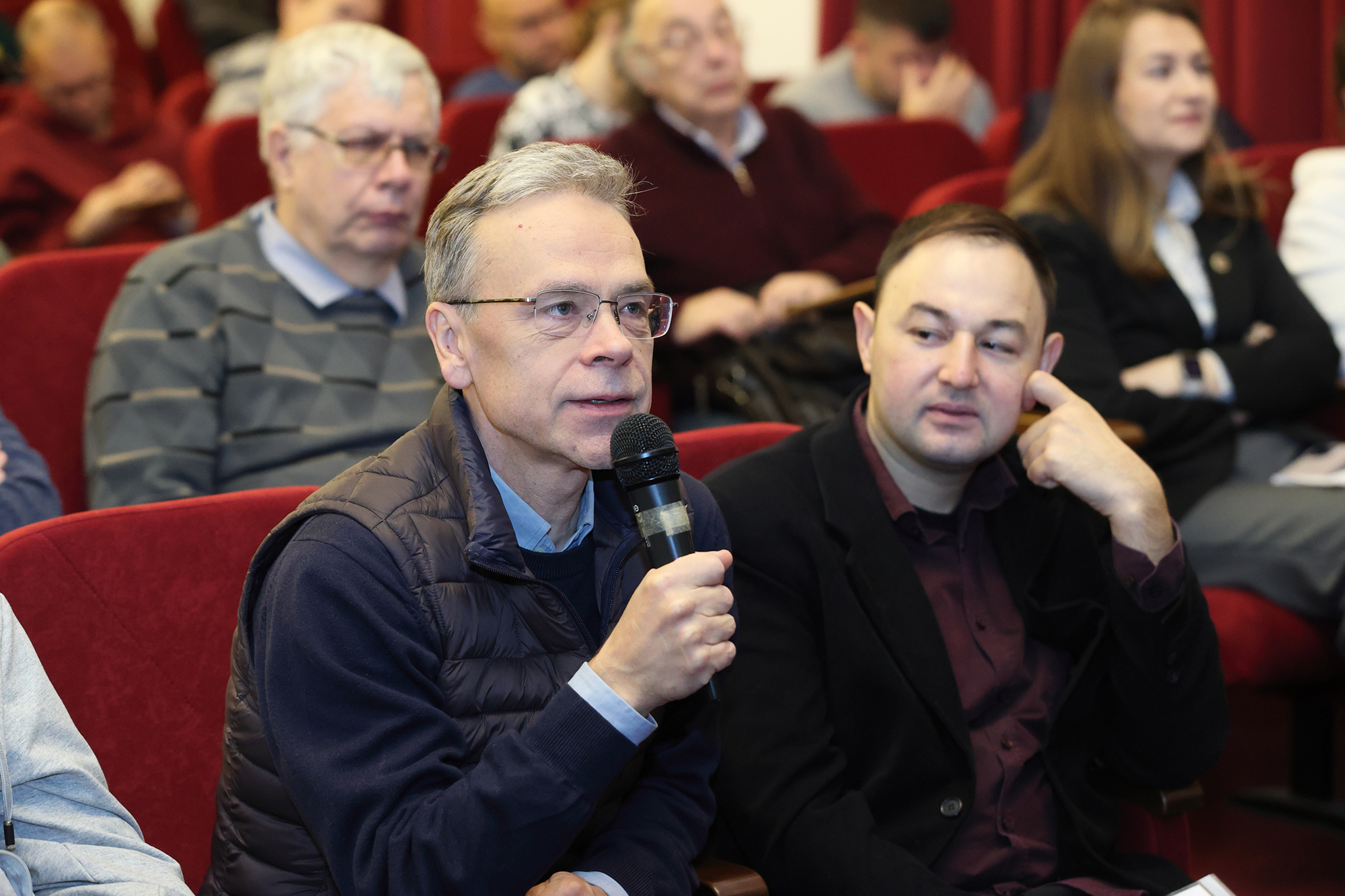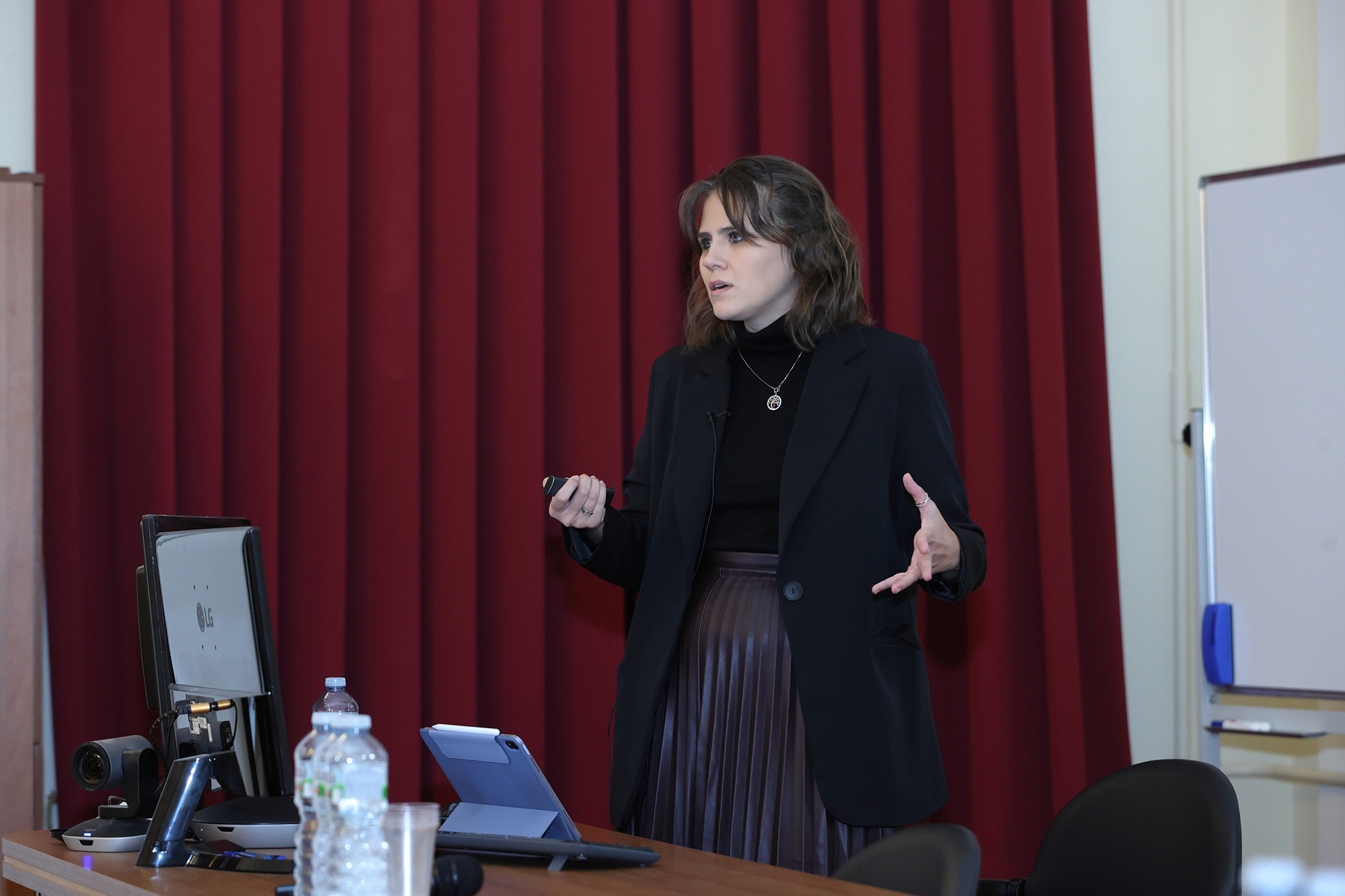13th Collaboration Meeting of BM@N Experiment starts at VBLHEP JINR
News, 09 October 2024
On 8–10 October, the 13th Collaboration Meeting of the BM@N (Baryonic Matter at Nuclotron) Experiment at the NICA Accelerator Complex is taking place at the Laboratory of High Energy Physics of the Joint Institute for Nuclear Research in a hybrid format. The participants are discussing the results of the collaboration’s research and plans for the development of the BM@N Project.
Top of the agenda are the reconstruction and identification of strange particles and topology analysis of collision events of xenon (Xe) beam nuclei with a caesium iodide (CsI) target obtained during the physics run at the Booster–Nuclotron Complex. Special attention will be paid to the progress of physical analysis based on previously recorded data on argon-nuclear interactions. Other topics for discussion include planning the next session on the BM@N Facility, including its physics programme and detector configuration.
In his welcome speech, VBLHEP JINR Chief Researcher Richard Lednicky noted the collaboration’s rapid development and the high research activity of its participants. “The BM@N Experiment is very important for the global scientific community, as our researchers are studying one of the most interesting areas: dense baryonic matter properties,” Richard Lednicky emphasised.
As part of the plenary session, Collaboration Spokesperson, Head of the VBLHEP JINR Scientific and Experimental Department of Baryonic Matter at Nuclotron Mikhail Kapishin provided an overview of the results and progress of the BM@N Experiment. Currently, 214 representatives of 13 scientific centres of Bulgaria, China, Kazakhstan, Russia, and Uzbekistan are part of the collaboration. Mikhail Kapishin highlighted the progress of the ongoing work and the solution of the main tasks of analysing experimental data. The next physics session using a xenon beam is scheduled for 2025. As part of the preparation for the session using a bismuth beam, researchers plan to install an additional station of silicon FSD detectors and launch a new two-coordinate (X/Y) high-granularity neutron detector to measure neutron yields and collective fluxes.
“The collaboration’s participants strive to obtain the most reliable physical results. This process takes time. First, we need to calibrate the detectors and check measurement systematics using various methods to confirm the data obtained. Only then can we be sure our results are reliable, which is especially important for future research,” Mikhail Kapishin said.
Deputy Head of the VBLHEP JINR Scientific and Experimental Department of the Multi-Purpose Detector Semyon Piyadin discussed the progress and plans of the BM@N Facility. The mechanical supports were designed and manufactured, taking into account the modernisation of the BM@N Facility’s external tracking system. The central tracking system is being installed inside the SP-41 Magnet. The lower GEM detectors are already installed. In preparation for the modernisation of the BM@N Detectors, two large CSC (Cathode Strip Chamber) detectors and a ScWall (Scintillation Wall) detector were installed in the experimental pavilion. In addition, mechanical supports were installed for two new time-of-flight detectors (ToF-400) and four CSC detectors.
On the first day of the meeting, the collaboration participants discussed the results of data analysis obtained in previous physics sessions. VBLHEP JINR researchers Alexander Zinchenko, Ksenia Alishina, Vadim Kolesnikov, and Valerii Troshin made presentations on the progress of data analysis on the formation of Λ-hyperons.
A junior researcher at the VBLHEP JINR Sector of Nuclear-Nuclear Interaction Analysis and Experimental Methodology Development Nikita Lashmanov discussed the characteristics of the developed compact time-of-flight spectrometer and the first preliminary results obtained during 124 Xe + CsI collisions at 3.8 AGeV. A junior researcher at the VBLHEP JINR Sector of Physical Analysis at the Multipurpose Detector Mikhail Mamaev made a presentation on the analysis of the directional flow of protons in Xe + CsI collisions at 3.8 AGeV. An engineer at the VBLHEP JINR Secotr of Baryonic Matter Research at MPD Pyotr Alekseev talked about the progress of the study of femtoscopic correlations in the BM@N Experiment. A researcher at the Institute for Nuclear Physics of the Russian Academy of Sciences Dim Idrisov spoke provided an overview of the Bayesian approach to determining centrality using the forward hadron calorimeter in the BM@N Experiment.
The event included a meeting of the Institutional Board of the BM@N Collaboration. VBLHEP JINR Chief Researcher Richard Lednicky was elected as the new collaboration spokesperson. The final decision was made on electing Deputy Director of the Skobeltsyn Institute of Nuclear Physics of Moscow State University Mikhail Merkin as Chair of the Collaboration’s Institutional Board.
On the second day of the event, the participants will continue to discuss the latest data analysis results and issues related to the preparation and operation of the experiment’s detectors. The software session is scheduled for 10 October. In total, the programme of the 13th collaboration meeting included more than 30 presentations on the implementation of the BM@N Project.
